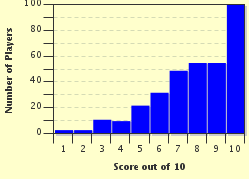Quiz Answer Key and Fun Facts
1. Which tall, white, long-legged bird has a bill similar to a mousetrap, with an incredibly fast reaction time of around 25 milliseconds?
2. Which seabird, sometimes dubbed the sea parrot, sports a colourful beak during the springtime, which then fades to a dull grey in the winter?
3. Which mammal, which despite its misleading name is actually a member of the bat family, is not only an excellent flier, but also extremely adept at climbing trees?
4. Which highly sociable marine mammal can be found near the Arctic Circle, and is easily identified by its flat-flipper and distinctive whiskers, as well as its two, long, white tusks?
5. Which distinctively-shaped invertebrate has bony, calcified skin, and is known for its regenerative powers?
6. Which omnivorous mammal, often referred to as the honey bear, lives in the tropical forests of Central and South America, and is related to the raccoon?
7. Which reclusive mammal, the smallest of the bear family, is so named due to the golden patch found on its chest?
8. Which terrestrial primate, found only in the mountains of Ethiopia, lives in a matriarchal society and spends much of its day munching on grasses?
9. Which solitary mammal, indigenous to the island of Madagascar, has retractable claws and was for many years incorrectly believed to be a member of the cat family?
10. Which large, herbivore marine mammal, which is related to the elephant, has a fluked tail, similar to that of a dolphin, and is content to graze on the grasses it finds on the sea bed?
Source: Author
poshprice
This quiz was reviewed by FunTrivia editor
guitargoddess before going online.
Any errors found in FunTrivia content are routinely corrected through our feedback system.


